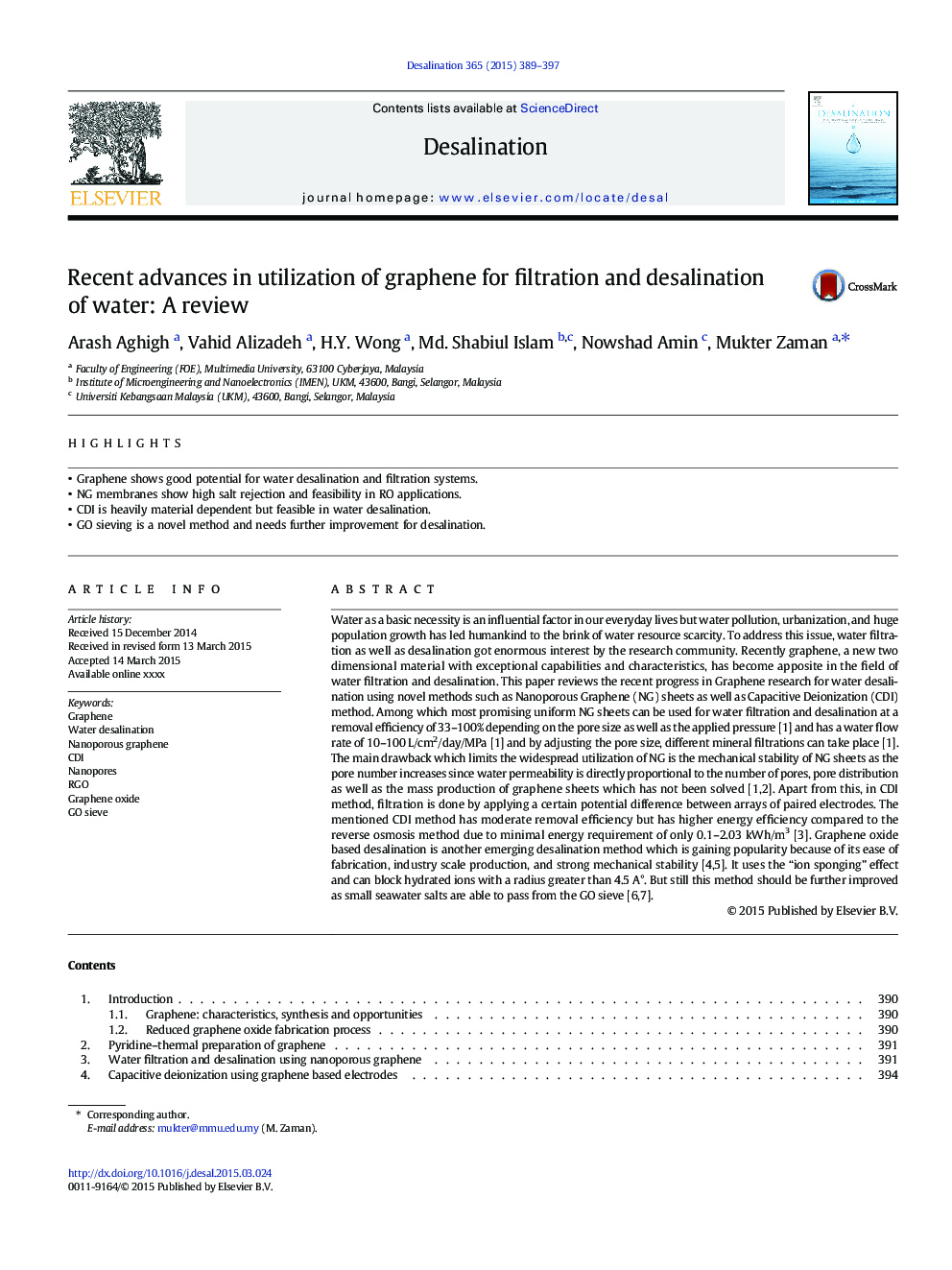| کد مقاله | کد نشریه | سال انتشار | مقاله انگلیسی | نسخه تمام متن |
|---|---|---|---|---|
| 7008299 | 1455330 | 2015 | 9 صفحه PDF | دانلود رایگان |
عنوان انگلیسی مقاله ISI
Recent advances in utilization of graphene for filtration and desalination of water: A review
ترجمه فارسی عنوان
پیشرفت های اخیر در استفاده از گرافن برای فیلتراسیون و نمک زدایی آب: بررسی
دانلود مقاله + سفارش ترجمه
دانلود مقاله ISI انگلیسی
رایگان برای ایرانیان
کلمات کلیدی
موضوعات مرتبط
مهندسی و علوم پایه
مهندسی شیمی
تصفیه و جداسازی
چکیده انگلیسی
Water as a basic necessity is an influential factor in our everyday lives but water pollution, urbanization, and huge population growth has led humankind to the brink of water resource scarcity. To address this issue, water filtration as well as desalination got enormous interest by the research community. Recently graphene, a new two dimensional material with exceptional capabilities and characteristics, has become apposite in the field of water filtration and desalination. This paper reviews the recent progress in Graphene research for water desalination using novel methods such as Nanoporous Graphene (NG) sheets as well as Capacitive Deionization (CDI) method. Among which most promising uniform NG sheets can be used for water filtration and desalination at a removal efficiency of 33-100% depending on the pore size as well as the applied pressure [1] and has a water flow rate of 10-100 L/cm2/day/MPa [1] and by adjusting the pore size, different mineral filtrations can take place [1]. The main drawback which limits the widespread utilization of NG is the mechanical stability of NG sheets as the pore number increases since water permeability is directly proportional to the number of pores, pore distribution as well as the mass production of graphene sheets which has not been solved [1,2]. Apart from this, in CDI method, filtration is done by applying a certain potential difference between arrays of paired electrodes. The mentioned CDI method has moderate removal efficiency but has higher energy efficiency compared to the reverse osmosis method due to minimal energy requirement of only 0.1-2.03 kWh/m3 [3]. Graphene oxide based desalination is another emerging desalination method which is gaining popularity because of its ease of fabrication, industry scale production, and strong mechanical stability [4,5]. It uses the “ion sponging” effect and can block hydrated ions with a radius greater than 4.5 A°. But still this method should be further improved as small seawater salts are able to pass from the GO sieve [6,7].
ناشر
Database: Elsevier - ScienceDirect (ساینس دایرکت)
Journal: Desalination - Volume 365, 1 June 2015, Pages 389-397
Journal: Desalination - Volume 365, 1 June 2015, Pages 389-397
نویسندگان
Arash Aghigh, Vahid Alizadeh, H.Y. Wong, Md. Shabiul Islam, Nowshad Amin, Mukter Zaman,
